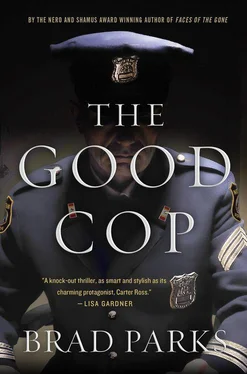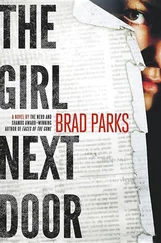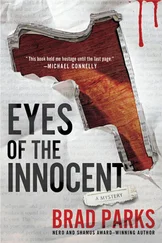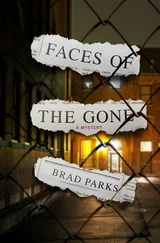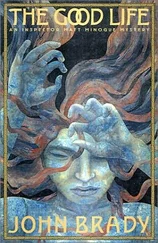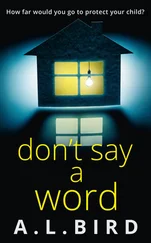Brad Parks - The Good Cop
Здесь есть возможность читать онлайн «Brad Parks - The Good Cop» весь текст электронной книги совершенно бесплатно (целиком полную версию без сокращений). В некоторых случаях можно слушать аудио, скачать через торрент в формате fb2 и присутствует краткое содержание. Год выпуска: 2013, ISBN: 2013, Издательство: Minotaur Books, Жанр: Триллер, на английском языке. Описание произведения, (предисловие) а так же отзывы посетителей доступны на портале библиотеки ЛибКат.
- Название:The Good Cop
- Автор:
- Издательство:Minotaur Books
- Жанр:
- Год:2013
- ISBN:9781250005526
- Рейтинг книги:3 / 5. Голосов: 1
-
Избранное:Добавить в избранное
- Отзывы:
-
Ваша оценка:
- 60
- 1
- 2
- 3
- 4
- 5
The Good Cop: краткое содержание, описание и аннотация
Предлагаем к чтению аннотацию, описание, краткое содержание или предисловие (зависит от того, что написал сам автор книги «The Good Cop»). Если вы не нашли необходимую информацию о книге — напишите в комментариях, мы постараемся отыскать её.
The Good Cop — читать онлайн бесплатно полную книгу (весь текст) целиком
Ниже представлен текст книги, разбитый по страницам. Система сохранения места последней прочитанной страницы, позволяет с удобством читать онлайн бесплатно книгу «The Good Cop», без необходимости каждый раз заново искать на чём Вы остановились. Поставьте закладку, и сможете в любой момент перейти на страницу, на которой закончили чтение.
Интервал:
Закладка:
“Well, he just seems to have taken a lot of interest in Mimi,” I said, hoping Pastor Al would catch my drift.
He didn’t. “Are you saying Detective Fusco is continuing to investigate this matter on his own?”
Oh, he’s investigating a lot more than that, I thought.
“I’m not sure what Detective Fusco is or isn’t doing,” I answered honestly. “But he sure seems to be providing Mimi with a great deal of … comfort. ”
It was, I decided, my last gambit. If he didn’t play into it this time, I was dropping it.
“Well, that is a very Christian thing of him to do,” Pastor Al said. “I will have to make sure he is lauded for that in some way. Perhaps we can invite him to our Law Enforcement Recognition banquet next fall.”
I looked at Pastor Al for any sign of falseness. But there was nothing on his drooping face except for loose jowls.
He didn’t know about the affair. And I sure wasn’t going to be the one to tell him. For the time being, I didn’t want Mimi and Fusco knowing I was onto them. I couldn’t take the chance of informing Pastor Al and having him turn it into an opportunity to lecture Mimi about the seventh commandment.
Why Pastor Al dropped his call for an independent investigation was once again a mystery to me. Maybe he really did learn something that made him buy into the official version. Or maybe what he learned was that someone “at the highest level” was making him an offer he couldn’t refuse, just to shut him up.
Somewhere, I suspected, one of Pastor Al’s car washes might have a fleet of Newark City street sweepers in it.
The myth of gun-running is that given the large numbers of illegal weapons found on city streets, the traffickers must be pushing product in huge quantities. The truth is that Red Dot Enterprises, like other criminal syndicates that dealt in guns, kept their quantities modest. A small number of guns was, quite simply, easier to hide.
So there was no huge cache of weapons, no warehouse stockpiled with firearms. Their entire inventory, stashed here and there, was contained in a few duffel bags.
That said, selling them was a nice, lucrative sideline-a great way to supplement other income.
The economics of gun-running are really no different than any other prohibited product. The prohibition itself helps drive up the perceived value of the item because it means the demand cannot be met through the ordinary mechanisms of legitimate commerce. The prohibition also creates an imperfect marketplace for the item, wherein information-about everything from supply to price-can be easily obscured.
From there, Red Dot Enterprises relied on the simplest of all business principles: buy low, sell high.
The guns that Red Dot Enterprises offered to their clients, those brand-name.22s and.38s that were so easily tucked into waistbands, typically retailed for somewhere between $299 and $329. Sure, you could get guns for less-Hi Point made a 9 mm that went for roughly $150-but Red Dot Enterprises didn’t bother with those. The margins were too low.
Every once in a while, Red Dot Enterprises had a customer ask for something with a little more “stopping power,” as gun people liked to call it. Those requests were honored on an as-needed basis. Requests for automatic weapons were rejected. They were just too hard to find. Besides, they tended to attract a little too much attention.
Mostly, Red Dot stuck with the low-caliber guns it could acquire easily. A typical shipment involved twenty guns for the standard $8,000-or $400 apiece. The associates at Red Dot Enterprises had a rule that they didn’t sell a new gun for less than $500, which guaranteed they’d made at least $2,000 per shipment. That more than compensated for the time and gas money.
But, in truth, the new guns were only part of where the money was. New guns were great for luring in customers. They were a kind of status symbol in the hood-every corner punk wanted to be the guy with the new gun-and they had a certain practical value, because the owner could be reasonably assured a gun that came in a new box would function properly when it was absolutely needed.
A big chunk of the money, though? That was in the used gun market. Old guns littered the hood like so much McDonald’s trash, getting used and reused many times. Red Dot Enterprises had devised a variety of ways to acquire old guns while spending virtually no money to do it. As a result, every used gun Red Dot Enterprises sold was nearly 100 percent profit. And Red Dot had devised a way to get a far better price than most of the other gun runners, who might sell a used gun for as little as $50 or rent one out for even less.
So, essentially, Red Dot Enterprises had two types of customers. There were high-end buyers, who were looking for-and received-the high-end, new merchandise. And then there were the customers who came to Red Dot Enterprises for a new gun, balked at the price tag, and happily settled for used merchandise. Either way, there was money to be made.
And for Red Dot Enterprises, the great thing about guns were: the more people have, the more other people feel they need one. It was a business model based on a fear that fed itself.
CHAPTER 5
With little more to be learned from Pastor Al-or at least little that didn’t involve a sermon-I soon excused myself, thanking him for the interview. I went back out on the street and, having departed God’s house, decided I could risk powering up my cell phone without incurring any unnecessary wrath.
My phone told me I had two missed calls and two messages waiting. From looking at the numbers, I knew it was my two spokesmen. Flaks love it when they get a reporter’s voice mail. It allows them to dump their canned, one- or two-sentence statement and get away before you can ask difficult follow-up questions that require them to do more work. But at the same time, it allows them to ignore your return phone call because, hey, they called you back already! You got the statement! What are you griping about? Come on!
In this case, the flaks were doing a neat little do-si-do. Hakeem Rogers was in full duck-and-cover mode, saying he had no comment because the matter had been referred to the Essex County Prosecutor’s Office.
The Essex County Prosecutor’s Office spokesman, meanwhile, called to say that for the time being, he had nothing to add beyond what the Newark Police Department had already said; and that I couldn’t interview the medical examiner, on the grounds that it was an ongoing case.
So, in other words, Newark was deferring to Essex County, which was deferring to Newark. It was overlapping governmental bureaucracy at its absolute finest. Each part could claim it was in the right, even while the whole was still very wrong. Meanwhile, someone was getting away with murder. And he was a cop, no less.
It was enough to make me, at the very least, hungry. And since I still wasn’t keen for fried chicken, I went back to the office, parked, and sought some Pizza Therapy.
On my way toward the pizzeria, I saw Tommy Hernandez on the opposite side of the street and heading in the same direction. Tommy is twenty-four, second-generation Cuban American, and gay as the day is long. I’m not sure his family knows about the last part-Tommy still lives with his parents, and his bedroom at home might as well be a closet, because he’s still in it-but the rest of the world doesn’t have a very tough time figuring it out. Tommy is trim, neat, slightly below average height, well above average in looks, and, at all times, perfectly accessorized.
At least technically, Tommy is still an intern. His one-year assignment with us began well over a year ago and has developed into an interesting stalemate: the paper cannot afford to bump him up to full-time status, inasmuch as then he might actually start expecting raises, 401(k) matching, and other wild extravagances; at the same time, the paper couldn’t let him go because he was one of our best natural reporters and he covered Newark City Hall, one of our most important beats.
Читать дальшеИнтервал:
Закладка:
Похожие книги на «The Good Cop»
Представляем Вашему вниманию похожие книги на «The Good Cop» списком для выбора. Мы отобрали схожую по названию и смыслу литературу в надежде предоставить читателям больше вариантов отыскать новые, интересные, ещё непрочитанные произведения.
Обсуждение, отзывы о книге «The Good Cop» и просто собственные мнения читателей. Оставьте ваши комментарии, напишите, что Вы думаете о произведении, его смысле или главных героях. Укажите что конкретно понравилось, а что нет, и почему Вы так считаете.
